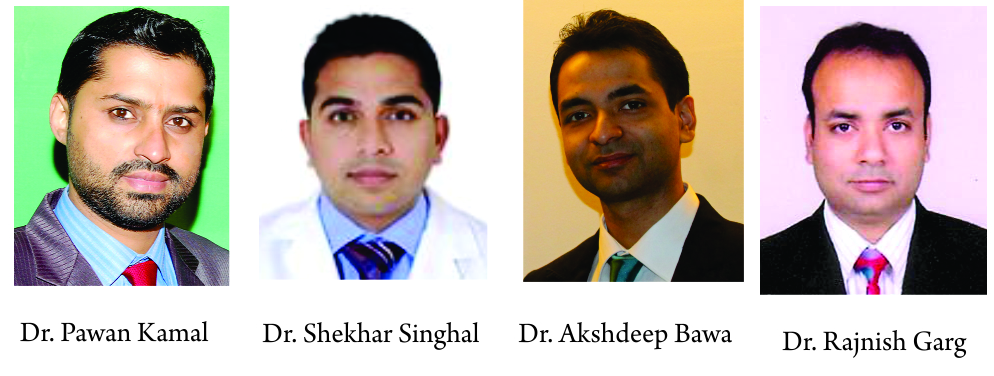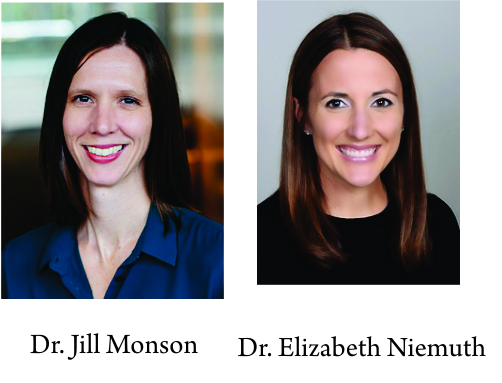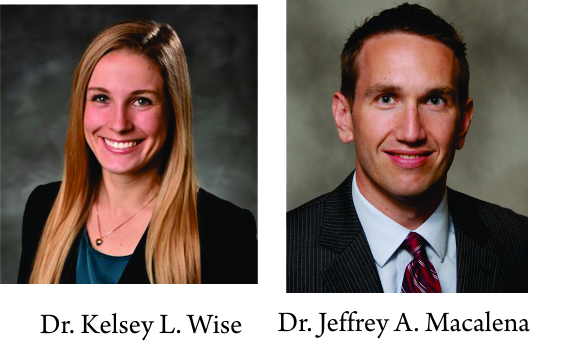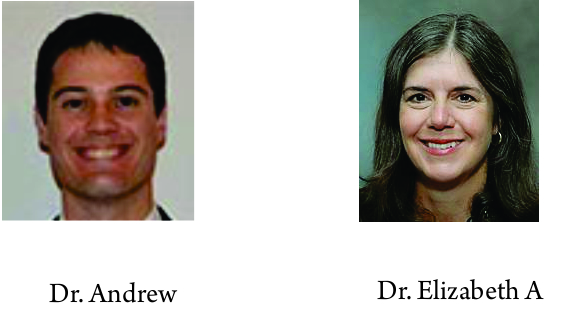Jarred K Holt, Bradley J Nelson
Volume 3 | Issue 1 | Jan – Apr 2018 | Page 3-9
Author: Jarred K Holt [1], Bradley J Nelson [1,2]
[1] Department of, TRIAOrthopaedic Center, 8100 Northland Drive, Bloomington, MN 55431,
[2] Department of Orthopaedic Surgery, University of Minnesota, 2450 Riverside Avenue South, Suite R200, Minneapolis, MN 55454
Address of Correspondence
Dr. Bradley J Nelson,
Department of Orthopaedic Surgery, University of Minnesota, 2450 Riverside Avenue South, Suite R200,Minneapolis, MN 55454.
E-mail: ???
Abstract
Lateral patellar dislocation is a common injury affecting a young, athletically active population. These injuries occur as a direct trauma to the knee or as a result of a twisting mechanism on a planted foot. They are typically accompanied by an audible “pop,” acute pain, and substantial swelling. The nature of the injury results in a variety of bony and soft tissue disruptions including medial patellofemoral ligament tears and osteochondral lesions of the femoral trochlea and inferomedial patella. In the acute setting, initial treatment is directed toward obtaining a concentric reduction, though oftentimes, this has already occurred spontaneously following the injury. Further, management decisions are based on a multitude of factors including concomitant injuries and patient anatomic considerations. Historically, the first-time patella dislocations were treated conservatively; however, more recent literature supports operative care in an effort to prevent recurrent instability events. Given an overall lack of compelling evidence to support either treatment option, it is felt that a thorough risk assessment and shared decision-making model should be employed to guide care of the first-time patella dislocation.
Key words: lateral patellar dislocation, evaluation, surgical management
References
1. Stefancin JJ, Parker RD. First-time traumatic patellar dislocation: A systematic review. ClinOrthopRelat Res 2007;455:93-101.
2. Askenberger M, Ekström W, Finnbogason T, Janarv PM. Occult intra-articular knee injuries in children with hemarthrosis. Am J Sports Med 2014;42:1600-6.
3. Christensen TC, Sanders TL, Pareek A, Mohan R, Dahm DL, Krych AJ, et al. Risk factors and time to recurrent ipsilateral and contralateral patellar dislocations. Am J Sports Med 2017;45:2105-10.
4. Fithian DC, Paxton EW, Stone ML, Silva P, Davis DK, Elias DA, et al. Epidemiology and natural history of acute patellar dislocation. Am J Sports Med 2004;32:1114-21.
5. Gravesen KS, Kallemose T, Blond L, Troelsen A, Barfod KW. High incidence of acute and recurrent patellar dislocations: A retrospective nationwide epidemiological study involving 24.154 primary dislocations. Knee Surg Sports TraumatolArthrosc2017. DOI: 10.1007/s00167-017-4594-7.
6. Atkin DM, Fithian DC, Marangi KS, Stone ML, Dobson BE, Mendelsohn C, et al. Characteristics of patients with primary acute lateral patellar dislocation and their recovery within the first 6 months of injury. Am J Sports Med 2000;28:472-9.
7. Mitchell J, Magnussen RA, Collins CL, Currie DW, Best TM, Comstock RD, et al. Epidemiology of patellofemoral instability injuries among high school athletes in the united states. Am J Sports Med 2015;43:1676-82.
8. Elias DA, White LM, Fithian DC. Acute lateral patellar dislocation at MR imaging: Injury patterns of medial patellar soft-tissue restraints and osteochondral injuries of the inferomedial patella. Radiology 2002;225:736-43.
9. Tompkins MA, Rohr SR, Agel J, Arendt EA. Anatomic patellar instability risk factors in primary lateral patellar dislocations do not predict injury patterns: An MRI-based study. Knee Surg Sports TraumatolArthrosc 2018;26:677-84.
10. Askenberger M, Arendt EA, Ekström W, Voss U, Finnbogason T, Janarv PM, et al. Medial patellofemoral ligament injuries in children with first-time lateral patellar dislocations: A Magnetic resonance imaging and arthroscopic study. Am J Sports Med 2016;44:152-8.
11. Kepler CK, Bogner EA, Hammoud S, Malcolmson G, Potter HG, Green DW, et al. Zone of injury of the medial patellofemoral ligament after acute patellar dislocation in children and adolescents. Am J Sports Med 2011;39:1444-9.
12. Seeley M, Bowman KF, Walsh C, Sabb BJ, Vanderhave KL. Magnetic resonance imaging of acute patellar dislocation in children: Patterns of injury and risk factors for recurrence. J PediatrOrthop 2012;32:145-55.
13. Bassett FH3rd. Acute dislocation of the patella, osteochondral fractures, and injuries to the extensor mechanism of the knee. AAOSInstr Course Lect1976;25:40-9.
14. Sillanpää PJ, Peltola E, Mattila VM, Kiuru M, Visuri T, Pihlajamäki H, et al. Femoral avulsion of the medial patellofemoral ligament after primary traumatic patellar dislocation predicts subsequent instability in men: A mean 7-year nonoperative follow-up study. Am J Sports Med 2009;37:1513-21.
15. Nord A, Agel J, Arendt EA. Axial knee radiographs: Consistency across clinic sites. Knee Surg Sports TraumatolArthrosc 2014;22:2401-7.
16. Cash JD, Hughston JC. Treatment of acute patellar dislocation. Am J Sports Med 1988;16:244-9.
17. Cofield RH, Bryan RS. Acute dislocation of the patella: Results of conservative treatment. J Trauma 1977;17:526-31.
18. Henry JH, Crosland JW. Conservative treatment of patellofemoral subluxation. Am J Sports Med 1979;7:12-4.
19. Jensen CM, Roosen JU. Acute traumatic dislocations of the patella. J Trauma1985;25:160-2.
20. Mäenpää H, Lehto MU. Patellar dislocation. The long-term results of nonoperative management in 100 patients. Am J Sports Med 1997;25:213-7.
21. Hawkins RJ, Bell RH, Anisette G. Acute patellar dislocations. The natural history. Am J Sports Med 1986;14:117-20.
22. Macnab I. Recurrent dislocation of the patella. J Bone Joint Surg(Am)1952;34:957-67.
23. Magnussen RA, Verlage M, Stock E, Zurek L, Flanigan DC, Tompkins M, et al. Primary patellar dislocations without surgical stabilization or recurrence: How well are these patients really doing? Knee Surg Sports TraumatolArthrosc 2017;25:2352-6.
24. Smith TO, Song F, Donell ST, Hing CB. Operative versus non-operative management of patellar dislocation. A meta-analysis. Knee Surg Sports TraumatolArthrosc 2011;19:988-98.
25. Amis AA. Current conceptson anatomy and biomechanics of patellar stability. Sports Med Arthrosc Rev 2007;15:48-56.
26. Senavongse W, Farahmand F, Jones J, Andersen H, Bull AM, Amis AA, et al. Quantitative measurement of patellofemoral joint stability: Force-displacement behavior of the human patella in vitro. J Orthop Res 2003;21:780-6.
27. Magnussen RA, Schmitt LC, Arendt EA. Return to soccer following acute patellar dislocation. In: Musahl V, Karlsson J, Krutsch W, Mandelbaum BR, Espregueira-Mendes J, d’Hooghe PP, editors. Return to Play in Football: An Evidence-based Approach.???: Springer-Verlag; 2018.
28. Ménétrey J, Putman S, Gard S. Return to sport after patellar dislocation or following surgery for patellofemoral instability. Knee Surg Sports TraumatolArthrosc 2014;22:2320-6.
29. Monson J, Arendt EA. Rehabilitative protocols for select patellofemoral procedures and nonoperative management schemes. Sports Med Arthrosc Rev 2012;20:136-44.
30. Ahmad CS, Stein BE, Matuz D, Henry JH. Immediate surgical repair of the medial patellar stabilizers for acute patellar dislocation. A review of eight cases. Am J Sports Med 2000;28:804-10.
31. Buchner M, Baudendistel B, Sabo D, Schmitt H. Acute traumatic primary patellar dislocation: Long-term results comparing conservative and surgical treatment. Clin J Sport Med 2005;15:62-6.
32. Harilainen A, Sandelin J. Prospective long-term results of operative treatment in primary dislocation of the patella. Knee Surg Sports TraumatolArthrosc 1993;1:100-3.
33. Dainer RD, Barrack RL, Buckley SL, Alexander AH. Arthroscopic treatment of acute patellar dislocations. Arthroscopy 1988;4:267-71.
34. Fukushima K, Horaguchi T, Okano T, Yoshimatsu T, Saito A, Ryu J, et al. Patellar dislocation: Arthroscopic patellar stabilization with anchor sutures. Arthroscopy 2004;20:761-4.
35. Haspl M, cicak N, Klobucar H, Pecina M. Fully arthroscopic stabilization of the patella. Arthroscopy 2002;18:E2.
36. Nikku R, Nietosvaara Y, Kallio PE, Aalto K, Michelsson JE. Operative versus closed treatment of primary dislocation of the patella. Similar 2-year results in 125 randomized patients. ActaOrthopScand 1997;68:419-23.
37. Nomura E, Inoue M, Osada N. Augmented repair of avulsion-tear type medial patellofemoral ligament injury in acute patellar dislocation. Knee Surg Sports TraumatolArthrosc 2005;13:346-51.
38. Vainionpää S, Laasonen E, Silvennoinen T, Vasenius J, Rokkanen P. Acute dislocation of the patella. A prospective review of operative treatment. J Bone Joint Surg Br 1990;72:366-9.
39. Yamamoto RK. Arthroscopic repair of the medial retinaculum and capsule in acute patellar dislocations. Arthroscopy 1986;2:125-31.
40. Apostolovic M, Vukomanovic B, Slavkovic N, Vuckovic V, Vukcevic M, Djuricic G, et al. Acute patellar dislocation in adolescents: Operative versus nonoperative treatment. IntOrthop 2011;35:1483-7.
41. Askenberger M. Operative versus non-operative treatment of acute primary lateral patellar dislocation in children: A prospective randomized study. Am J Sports Med???;???:???.
42. Camanho GL, Viegas Ade C, Bitar AC, Demange MK, Hernandez AJ. Conservative versus surgical treatment for repair of the medial patellofemoral ligament in acute dislocations of the patella. Arthroscopy 2009;25:620-5.
43. Nwachukwu BU, So C, Schairer WW, Green DW, Dodwell ER. Surgical versus conservative management of acute patellar dislocation in children and adolescents: A systematic review. Knee Surg Sports TraumatolArthrosc 2016;24:760-7.
44. Palmu S, Kallio PE, Donell ST, Helenius I, Nietosvaara Y. Acute patellar dislocation in children and adolescents: A randomized clinical trial. J Bone Joint Surg Am 2008;90:463-70.
45. Regalado G, Lintula H, Kokki H, Kröger H, Väätäinen U, Eskelinen M, et al. Six-year outcome after non-surgical versus surgical treatment of acute primary patellar dislocation in adolescents: A prospective randomized trial. Knee Surg Sports TraumatolArthrosc 2016;24:6-11.
46. Bitar AC, Demange MK, D’EliaCO, Camanho GL. Traumatic patellar dislocation: Nonoperative treatment compared with MPFL reconstruction using patellar tendon. Am J Sports Med 2012;40:114-22.
47. Arnbjornsson A, Egund N, Rydling O. The natural history of recurrent dislocation of the patella: Long-term results of conservative and operative treatment. J Bone Joint Surg [Br] 1992;74:140-2.
48. Christiansen SE, Jakobsen BW, Lund B, Lind M. Isolated repair of the medial patellofemoral ligament in primary dislocation of the patella: A prospective randomized study. Arthroscopy 2008;24:881-7.
49. Petri M, von Falck C, Broese M, Liodakis E, Balcarek P, Niemeyer P, et al. Influence of rupture patterns of the medial patellofemoral ligament (MPFL) on the outcome after operative treatment of traumatic patellar dislocation. Knee Surg Sports TraumatolArthrosc 2013;21:683-9.
50. Sillanpää PJ, Mäenpää HM, Mattila VM, Visuri T, Pihlajamäki H. Arthroscopic surgery for primary traumatic patellar dislocation: A prospective, nonrandomized study comparing patients treated with and without acute arthroscopic stabilization with a median 7-year follow-up. Am J Sports Med 2008;36:2301-9.
51. Erickson BJ, Mascarenhas R, Sayegh ET, Saltzman B, Verma NN, Bush-Joseph CA, et al. Does operative treatment of first-time patellar dislocations lead to increased patellofemoral stability? A Systematic review of overlapping meta-analyses. Arthroscopy 2015;31:1207-15.
52. Hing CB, Smith TO, Donell S, Song F. Surgical versus non-surgical interventions for treating patellar dislocation. Cochrane Database Syst Rev 2011;11:CD008106.
53. Zheng X, Kang K, Li T, Lu B, Dong J, Gao S, et al. Surgical versus non-surgical management for primary patellar dislocations: An up-to-date meta-analysis. Eur J OrthopSurgTraumatol 2014;24:1513-23.
54. Arendt EA, England K, Agel J, Tompkins MA. An analysis of knee anatomic imaging factors associated with primary lateral patellar dislocations. Knee Surg Sports TraumatolArthrosc 2017;25:3099-107.
55. Askenberger M, Janarv PM, Finnbogason T, Arendt EA. Morphology and anatomic patellar instability risk factors in first-time traumatic lateral patellar dislocations: A Prospective magnetic resonance imaging study in skeletally immature children. Am J Sports Med 2017;45:50-8.
56. Arendt EA, Donell ST, Sillanpää PJ, Feller JA. The management of lateral patellar dislocation: State of the art. J ISAKOS2017;2:205-12.
57. Jaquith BP, Parikh SN. Predictors of recurrent patellar instability in children and adolescents after first-time dislocation. J PediatrOrthop 2017;37:484-90.
58. Lewallen L, McIntosh A, Dahm D. First-time patellofemoral dislocation: Risk factors for recurrent instability. J Knee Surg 2015;28:303-9.
| How to Cite this article:. Holt J K, Nelson B J. First-time Lateral Patellar Dislocation: Evaluation and Management. Asian Journal of Arthroscopy Jan – April 2018; 3(1):3-9. |












